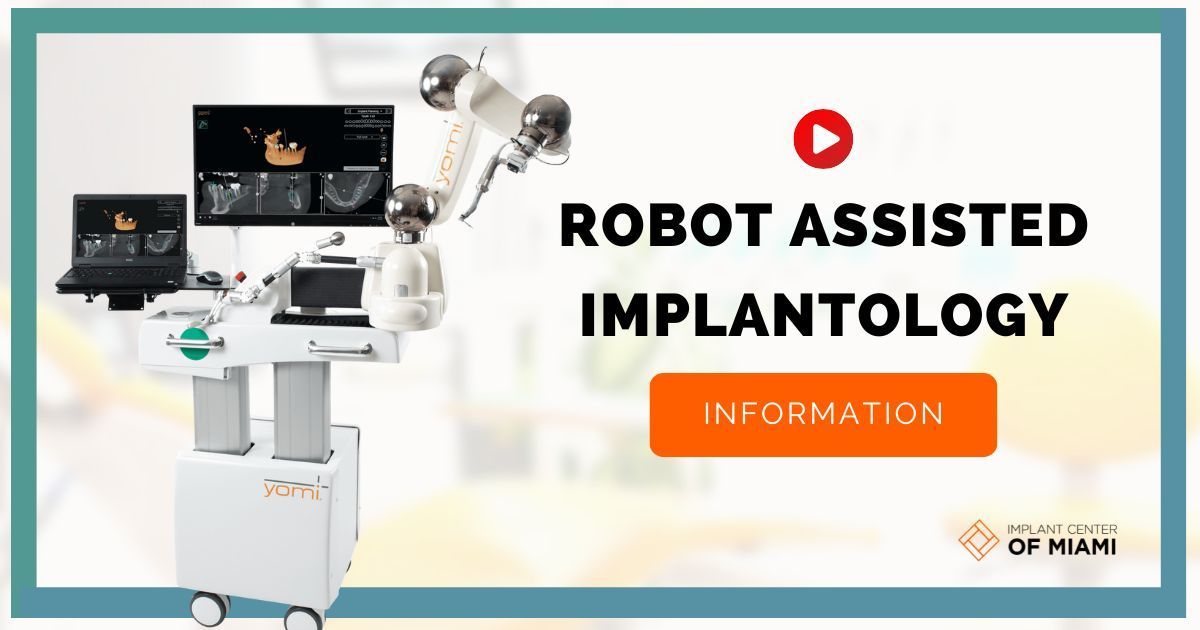Revolutionizing Dentistry: Embracing the Future with Robot Assisted Dental Implants
In the ever-evolving world of dentistry, the concept of robot dental implants is transforming the landscape of medical science. As technological advancements continue to push boundaries, robot dental implants stand as a testament to how robotics and AI can revolutionize patient care. This innovative technique represents a shift from traditional manual dental procedures, offering a new level of precision and efficiency. The use of robotics in dental implants provides enhanced accuracy, reduced risk of complications, and often, shorter recovery periods for patients. This exciting development harbors a new era of dental surgery, promising a future where complex procedures are seamlessly executed with robotic precision.
Request an Appointment
Introduction to Robot Dental Implant Technology
Robot Dental Implant Technology revolutionizes dental processes, enhancing precision & effectiveness. It involves the use of robotic tools guided by imaging software to perform dental implant surgeries. This cutting-edge technology ensures higher accuracy, minimal invasiveness, quicker recovery, and greater patient comfort.
History and Evolution of Robotic Surgery in Dentistry
Robotic surgery in dentistry, dating back to the late 20th century, has revolutionized the field. Originally only used for complex procedures, advancements in technology have broadened its scope. Over time, more precise and efficient robots have significantly improved patient comfort and recovery times. Augmented reality and AI further streamline oral surgeries, increasing accuracy and minimizing human error.
Understanding the Mechanics of Dental Implants
Dental implants are artificial tooth roots that offer a permanent base for replaced teeth. Involving titanium posts implanted into the jawbone, they emulate natural teeth roots. Understanding the mechanics requires knowledge on how they bond with the bone through a process called osseointegration, providing a strong basis for artificial teeth.
The Science Behind Robot Dental Implants
Robot dental implants use cutting-edge technology. Qualitative 3D imaging and precise placement by robot arm ensures optimal alignment and stability. The result is less invasive procedures, faster recovery times and improved accuracy over traditional manual methods.
How Robot Dental Implants Improve Precision and Accuracy
Robot dental implants enhance precision and accuracy by automating complex procedures, ensuring exact alignment and placement of implants. It minimizes human error and reduces patient discomfort. This technology allows dentists to perform operations with greater efficacy and meticulousness.
Pros and Cons of Robot-Assisted Dental Implant Surgery
Robot-assisted dental implant surgery improves precision, minimizes errors, speeds up the procedure, and often reduces post-operative discomfort for patients. However, these systems can be costly and require extensive training to operate correctly. Also, technical malfunctions, while rare, could disrupt operations.
The Process of a Robotic Dental Implant Surgery Explained
Robotic dental implant surgery utilizes precise, computer-guided technology to place dental implants. The dentist inputs data into a robotic arm, which then performs the surgery with high accuracy. The technology maps the oral cavity, pinpointing the optimal spot for the implant. This process reduces risk, improves recovery, and ensures a secure, accurate fit for the implant.
The Role of Artificial Intelligence in Robot Dental Implants
Artificial Intelligence (AI) plays a critical role in robot dental implants by making the process precise and less invasive. AI enhances diagnostics, crafts individualized treatment plans, and aids in implant fabrication. This technology assists dentists, reduces errors and ultimately enhances patient comfort and outcomes.
The Use of 3D Imaging and Robotics in Dentistry
3D imaging and robotics are revolutionizing dentistry. They facilitate precise diagnosis and treatment, reducing surgery time and patient discomfort. 3D imaging provides detailed scans of oral structures, while robotics aid in complex procedures, promoting efficient and accurate treatments.
Patient Safety: Can Robot Dentistry Be Trusted?
Robot dentistry is gaining attention for its precision and efficiency. While concerns exist about patient safety, numerous studies show that with advanced programming and strict regulation, it can be as trustworthy as human practitioners. Technology promises fewer errors and patient discomfort. However, more research and time are needed to build absolute trust.
Exploring the Benefits of Robot Dental Implant For Patients
Robot dental implant treatment promises increased precision, safety, and efficacy over traditional methods. Benefits for patients include less pain, reduced recovery time, and higher success rates, primarily due to the technology's accuracy in implant placement.
How Robotics Are Changing the Face of Dental Implant Surgery
Robotics are revolutionizing dental implant surgery by enhancing precision and reducing errors. Robots, guided by 3D imaging, can execute surgical plans with extreme accuracy, making procedures safer and more efficient. This technology also minimizes patients' discomfort and recovery time.
Compare and Contrast: Manual vs Robot dental Implant
Manual dental implants require a dentist's skill, providing a tactile sense during procedures, but may risk inaccuracies due to human factors. Robot-assisted dental implant procedures ensure precision and accuracy, although they may lack the dentist's intuitive adjustments.
Training and Skill Requirement for Operating Robot Dental Implants
To operate robot dental implants, a dentist requires specialized training in robotics as well as comprehensive dental skills. Training includes safe handling and maintenance of the robot, programming it for precise, individualized actions, and understanding the anatomy implications. Mastery of robotics and ongoing learning of technological updates are vital. Dentists also need proficiency in oral surgery to manage potential complications.
Post-Operative Care of Robotic Dental Implant Surgery
Post-operative care after robotic dental implant surgery includes rest, proper oral hygiene, and avoiding certain activities. It's crucial to follow the dentist's instructions, like taking prescribed medications for pain management and preventing infections. Regular check-ups are also essential for monitoring healing progress.
The Future Of Robotic Dentistry: Where Do We Go from Here?
The future of robotic dentistry holds promising potential. The integration of robotics could revolutionize treatments, boosting precision, efficiency and minimizing human error. Future innovations might focus on automating complex procedures, decreasing discomfort for patients, and improving accessibility to these services.
Case Studies: Successful Implementations of Robot Dental Implants
Case studies reveal successful implementation of robot dental implants globally. Robots offer precision and consistency, minimising human errors. They resolve complex cases, notably in implantology, exemplified by China's first robot-assisted dental implant. The operation was successful, paving the way for future advancements in dental robotics.
Debunking Myths: Fears, Queries, and Misconceptions about Robot Dental Implants
Robot dental implants have spurred many misconceptions and fears, largely due to unfamiliarity and misinformation. Contrary to popular belief, these implants are safe, precise, and less invasive. They simply assist dentists in performing complex procedures with greater accuracy. Queries about pain or discomfort can be allayed by specialists who ensure that adequate anesthesia and sedation are used during the process.
Financial Aspects: Cost of Robotic Assisted Dental Implant Surgery
Robotic-assisted dental implant surgery involves high upfront costs due to the advanced technology used. It typically costs between $3,000 to $6,000 per tooth, depending on location and specific patient needs. While expensive, the precision and improved outcomes can offer long-term savings.
The Global Impact and Growth of Robot Dental Implants
Robot dental implants are transforming global dental healthcare, eradicating human errors and enhancing precision. Rapid growth is observed due to high accuracy, increased patient comfort, and efficient treatment times. These advancements make dental care more accessible, contributing to global health wellbeing.
Final Thoughts: Revolutionizing Dentistry with Robotic Implants
Robotic implants are revolutionizing dentistry by enhancing precision and reducing human error. These implants aid with accurate placement, minimizing invasive procedures and healing time. Thus, combining robotics with dental science can transform the way we approach oral health.
Frequently Asked Questions
Dental Financing Options
Checking your options will not impact your credit score!
Apply Online in 30 Seconds
Fund Your Account
Start Your Treatment
Read Our Blog


Office Locations
Contact Us
For more information or to schedule an appointment, call us at 786-713-9290 or complete the form.
What Happens After I Send My Message?
Implant Center of Miami: Website Message
Locations Information
Our Services
Quick Links
Office Hours
- Mon - Fri
- -
- Sat - Sun
- Closed



